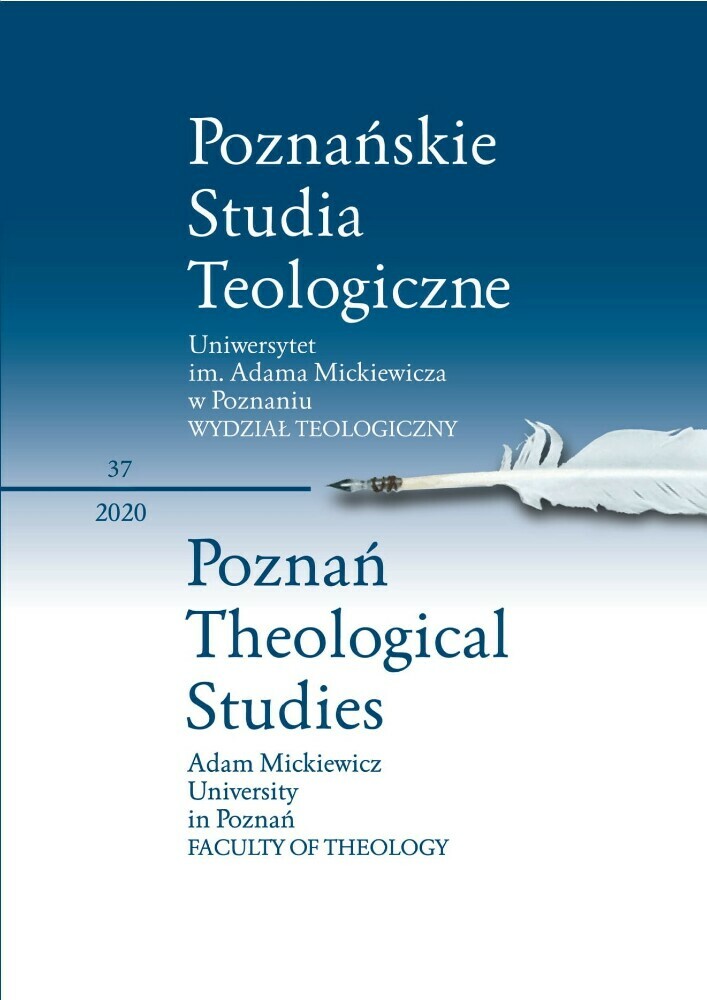Abstract
The presence of the sermon in cyberspace requires an in-depth theological interpretation and an appropriate classification. Evangelicals maintain that traditional homiletics is not able to meet this new technological challenge, thereby they call for creating a new homiletics, i.e. the one crafted for the Internet. This article outlines the proposal of such homiletics and discusses it thoroughly. This new approach toward Gospel preaching stems from the paradigm which perceives the sermon as an ‘open work of art’, adopted from Gerhard M. Martin’s aesthetic homiletics. Its supporters claim that the current situation allows for considering the Internet not only as a medium, but also a place where the Church is realized. Thus, the community gathered online around the sermon is treated as an ecclesial community. However, the Catholic Church does not accept such an understanding of both the Church and the sermon. In their view, in a virtual space the authentic preaching of the Church cannot be performed. Therefore, all forms of preaching on the Internet should not be researched by homiletics, but media theology.
Literaturhinweise
Adamek Z., Homiletyka, Tarnów 1992.
Becker J., Thygs M., Internetentwicklung und Entwicklung im Internet, ‘Informationes Theologiae Europae’ 13 (2004), pp. 191–204.
Beutel A., Offene Predigt. Homiletische Bemerkungen zu Sprache und Sache, ‘Pastoraltheologie’ 77 (1988), pp. 5 18–537.
Bieritz K.H., Offenheit und Eigensinn. Plädoyer für eine eigensinnige Predigt, in: Predigt als offenes Kunstwerk. Homiletik und Rezeptionsästhetik, hrsg. v. E. Garhammer, H.G . Schöttler, München 1998, pp. 28–50.
Bobert-Stützel S., Frömmigkeit und Symbolspiel, Göttingen 2000.
Bobert-Stützel S., ‘The medium is the message’. Zum medialen Wandel der Predigt im Internet, ‘Magazin für Theologie und Ästhetik’ 7 (2000), https://www.theomag.de/07/sbs1.htm.
Bobert-Stützel S., Verkündigung im Internet? Befund und Problematik, ‘Diakonia’ 6 (2000), pp. 416–419.
Dyk S., Relacja między przepowiadaniem słowa Bożego a Kościołem, ‘Kieleckie Studia Teologiczne’ 7 (2008), pp. 27–42.
Eco U., Dzieło otwarte. Forma i nieokreśloność w poetykach współczesnych, tłum. A. Sawisz, Warszawa 2008.
Engemann W., Semiotische Homiletik, Tübingen–Basel 1993.
Fechtner K., Den Zeitgenossen Kirche sein. Plädoyer für eine offene Volkskirche, in: ‘Deutsches Pfarrerblatt’ 5 (1996), pp. 235–238.
Fechtner K., Religiöser Individualismus und Kirche. Praktisch-theologische Perspektiven im Anschluss an Ernst Troeltsch, in: Religion in der Lebenswelt der Moderne, hrsg. v. K. Fechtner, M. Haspel, Stuttgart 1998, pp. 208–226.
Garhammer E., ‘Boomt jetzt die Ästhetik?‘ Homiletik und Rezeptionsästhetik, in: Predigt als offenes Kunstwerk. Homiletik und Rezeptionsästhetik, hrsg. v. E. Garhammer, H.G. Schöttler, München 1998, pp. 13–27.
Gehrig S., Leserlenkung und Grenzen der Interpretation. Ein Beitrag zur Rezeptionsästhetik am Beispiel des Ezechielbuches, Stuttgart 2013.
Janowski H.N., Vorwort, in: Cyberchurch? Kirche im Internet, hrsg. v. W. Nethöfel, M. Schnell, Frankfurt am Main 1998, p. 8.
Jauss H.R., Historia li teratury jako wyzwanie rzucone nauce o literaturze (fragmenty), tłum. R. Handke, ‘Pamiętnik Literacki’ 4 (1972), pp. 271–307.
John Paul II, Message for the 36th World Communications Day 2002, 6.
Juza M., Między wolnością a nadzorem. Internet w zmieniającym się społeczeństwie, Warszawa 2019.
Kapralska Ł., Wirtualne państwa — zabawa, nostalgia, utopia, in: Nie tylko Internet. Nowe media, przyroda i ‘technologie społeczne’ a praktyki kulturowe, red. J. Mucha, Kraków 2010, pp. 65–75.
Konatowski Ł., Przepowiadanie w Internecie — na przykładzie Chrześcijańskiego Serwisu ‘Mateusz’ [Master’s thesis, Faculty of Theology, Adam Mickiewicz University], Poznań 2009.
Kościół po ewangelicku — jak luteranie rozumieją Kościół, http://luter2017.pl/ewangelickie-rozumienie-kosciola-eklezjologia/.
Ludwig D., Theologie online. Die Göttinger Predigten im Internet und ihre Besucher. Momentaufnahme eines relationalen Geschehens, ‘Informationes Theologiae Europae’ 10 (2001), pp. 79–117.
Martin G.M., Predigt als ‘offenes Kunstwerk‘?, ‘Evangelische Theologie’ 44 (1984), pp. 46–58.
Martin G.M., Zwischen Eco und Bibliodrama. Erfahrungen mit einem neuen Predigtansatz, in: Predigt als offene s Kunstwerk. Homiletik und Rezeptionsästhetik, hrsg. v. E. Garhammer, H.G. Schöttler, München 1998, pp. 51–62.
Ne mbach U., Internethomiletik — eine faszinierende neue Disziplin. Am Beispiel der Göttinger Predigten dargestellt, ‘Evangelische Theologie’ 5 (2006), pp. 394–399.
Ryökäs E., Predigtgemeinschaft im Internet — eine Kirchengemeinschaft?, ‘Informationes Theologiae Europae’ 8 (1999), pp. 339–352.
Schröer H., Umberto Eco als Predigthelfer?, ‘Evangelische Theologie’ 44 (1984), pp. 58–63.
Sławiński H., Podmiot przepowiadania słowa w liturgii, in: Liturgia i przepowiadanie, red. W. Przyczyna, Kraków 2010, pp. 93–112.
Walczyk T., Bomba symulakrów — scena rzeczywistości ukryta za kulturą symulacji. Spektakl hiperrzeczywistości, ‘Humanistyka i Przyrodoznawstwo’ 21 (2015), pp. 195–208.
Lizenz
© 2020 Uniwersytet im. Adama Mickiewicza w Poznaniu, Wydawnictwo Naukowe UAM, Poznań
OPEN ACCESS

